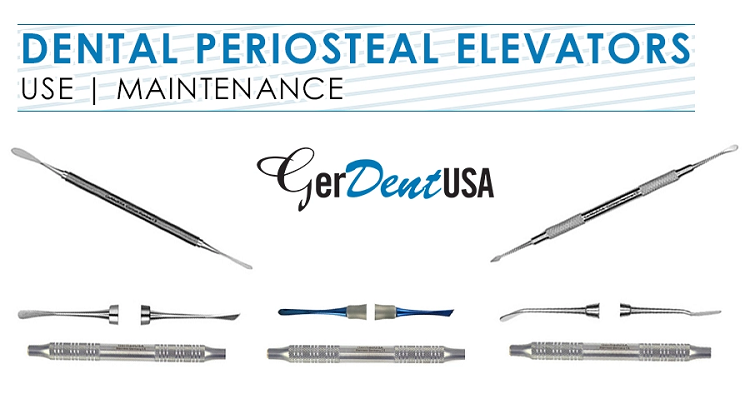In human dentistry, periosteal elevators are one of the beneficial tools to remove the decayed tooth from deep sockets. It is a multifunctional instrument that allows dentists to cut the periodontal and root networks. It also helps elevate the tooth that needs immediate removal from its bottom so that the forceps can pick it up without difficulty.
The elevators are efficient to use during tooth removals or exodontia. The primary role of the tool is to help dentists in the entire procedure of exodontia. With the help of dental elevators, dentists remove the tooth without pain and damage structures such as roots and gums.
Components Of The Periosteal Elevators
Periosteal elevator comprises prominent components such as blade, shank, and handle. Each component performs different functions and enhances the tool’s functioning. Therefore, it is important to understand their significance and use in all dental treatments and procedures.
Types Of The Dental Periosteal Elevator
There are different types and variations of surgical periosteal elevators available. Dentists can choose any variation per the need of a dental surgical procedure. There are some special types of elevators, such as:
-
Allen Periosteal Tooth Elevator
Several types of elevators are an integral part of regular dental procedures. First, we have Allen’s periosteal elevator to discuss. It deals with mucoperiosteum. Besides, it can carry fragile tissues and roots during the procedure. The tool works with two blades on each end.
The dentists consider it important for the treatments involving the tunnel technique as the final solution to provide a cure to the patient. This fact makes it clear that the tool can perform different functions for dentists regularly.
-
Kramer Periosteal Dental Elevator
Kramer’s elevator profile is another interesting variant to know about. Like the previous one, it also comes with two blades with curved edges mainly for fast and gentle movements and utilization. There are some important functions of the curved blades, such as it deals with fragile structures and not damaging them. The main role of this elevator is to separate the connective tissue around the bones of the oral cavity smoothly. More than that, it can perform for the dental surgeons to move the tissues during typical dental procedures like tooth removal.
-
Bennet Elevator
The tool is identical to Allen elevators in functioning. The purpose of a dentist to use this variant is to replace the Allen elevator in its shortage or absence. Moreover, it is beneficial to use a bennet elevator while dealing with mucoperiosteum.
-
Buser Elevator
The Buser Elevator has an angular blade shape. It helps to enable the dentist to have a clear view of the interproximal tissues. The tissues are present in tight areas of the oral cavity. The structure comprises two blades that allow the trauma and stress-free procedure.
-
Benque Elevator
It falls under the broad category of periosteal elevators. That’s why dentists depend on this special variant for standard dental procedures. It works on the elastic fibrous membrane layer that develops around the bones and uplifts it considerably.
-
Freer Periosteal Dental Elevator
It is a curved variant that is available with two significant blades that have important individual functions. One of the blades elevates the vestibule while the other lifts the palatine. These are sensitive structures more vulnerable to undergoing damage and lead the procedure towards different complications.
Conclusion
In dental surgical procedures, periosteal elevators are of great importance. It allows dentists to dislocate or remove the decayed tooth without complications. The dentist can choose the size or length of the dental elevator as per the requirement, no matter if the dentist is working on molar teeth or mandibular teeth.
Consider buying dental surgical instruments such as elevators or probes for your dental practice from GerDentUSA Inc. There is a wide variety of instruments available at reasonable prices. In addition, you can request a customized product if any instrument of your choice is unavailable. Check out the latest products with the latest deals now.
Frequently Asked Questions
What is a freer periosteal elevator?
A Freer elevator is a dental instrument that accommodates dental practitioners for routine dental treatments. It helps in tooth extractions, periodontal issues, and soft tissue manipulation.
What is the use of surgical elevators?
Surgical elevators are important for the field of dentistry and others. They uplift and dislodge the decayed tooth. They also help to move roots and tissues and cut membranes and periodontal networks in dental procedures with the same efficiency.
What is the function of the Cryer elevator in human dentistry?
It has two main roles to perform: dislodging the tooth from its periodontal connection and facilitating tooth removal.





